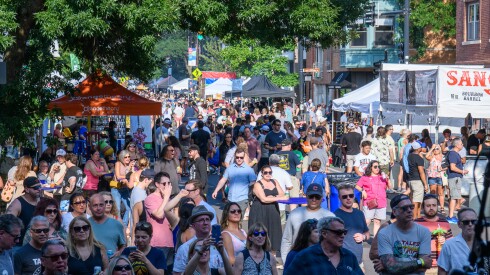About two dozen workers at the Chicago History Museum have signed a letter saying they plan to unionize. In the letter, issued Wednesday morning, the employees said they are seeking clear communication from management and competitive wages.
The move is one in a wave of similar organizing efforts at other Chicago cultural institutions. The workers are organizing with the American Federation of State, County and Municipal Employees, or AFSCME Council 31. Workers from the Art Institute of Chicago, the Field Museum and Newberry Library, among others, have joined that same union in recent years.
Hannah Johnson, who works in member relations at the museum, is on the organizing committee. She said she and others at the Chicago History Museum have been inspired by cultural workers who have recently unionized, both locally and nationally.
“We felt that now was a really good time to really seek out that sense of stability and security regarding our jobs, our wages and our benefits, and also request higher degrees of transparency from management,” Johnson said. “It does feel a lot more secure to see this snowball effect of, all of these other places in our city have done this and won, so why shouldn’t we? Why can’t we?”
Across the state, AFSCME Council 31 represents about 75,000 workers, plus another 25,000 members in its retiree organization. The workers include state, city and county government employees, plus workers at schools, nonprofits and cultural organizations.
In the last three years, more than 2,000 Chicago-area cultural workers have joined the union, according to Anders Lindall, an AFSCME Council 31 spokesperson.
Lindall said the trend of cultural organizing started in Philadelphia and Minneapolis museums. About 500 workers at the Art Institute of Chicago broke new ground among local institutions with their organizing effort in 2021.
“That really kicked off the wave here locally that has resulted in organizing victories for museum and other cultural institution employee groups with our union in the last four years,” Lindall said.
Lindall said it’s too early to know how management at the Chicago History Museum — where a permanent exhibit covers the history of labor unions — will respond to the organizing efforts
In an email, a Chicago History Museum spokesperson said the museum “honors our employees’ right to form a union and we will continue to encourage all employees to make their voices heard.”
“Regardless of any unionization election outcome, we intend to listen and engage with all staff to understand their vision for a positive work environment, while preserving our collective commitment to the Chicago History Museum and its mission,” the museum’s statement reads.
Lindall said the hope among the organizers is that Chicago History Museum management mirrors the response from leadership at the Museum of Contemporary Art Chicago.
When workers there announced their unionization effort last year, Lindall said management voluntarily recognized the effort and “did not try to resist or interfere or frustrate the rights of workers to come together in any way.”
“We were able to work cooperatively with management on a process to recognize and certify the union and to get quickly to the bargaining table,” Lindall said. “So, we would hope that that would be a template that the History Museum would look to follow.”
If ratified, the Chicago History Museum Workers United would represent about 70 employees, ranging from forward-facing roles, like workers in the cafe and visitor services, to more behind-the-scenes positions, like curators and archivists.
Courtney Kueppers is an arts and culture reporter at WBEZ.









